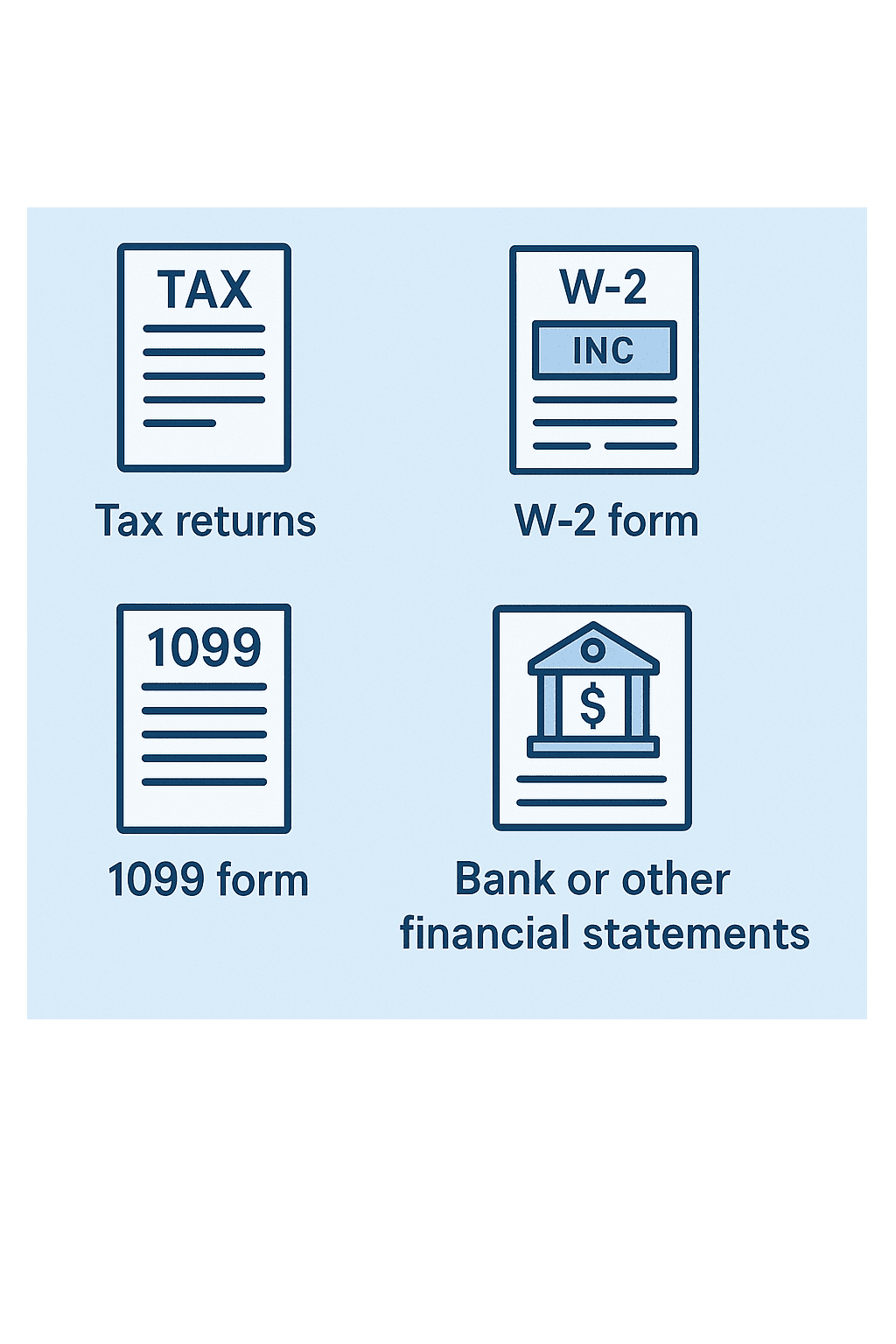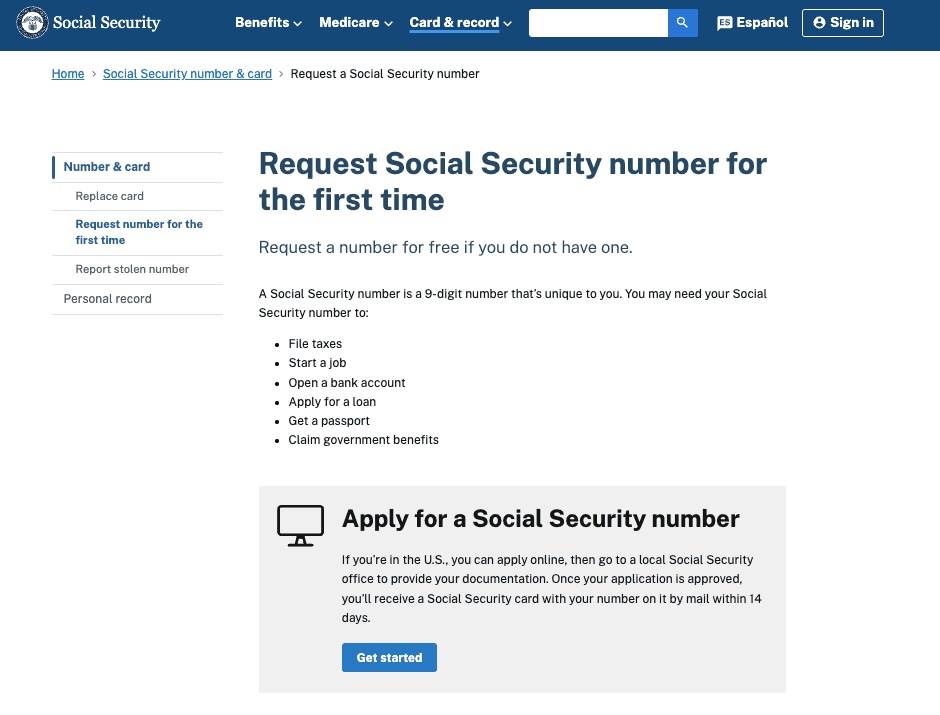In the U.S., a Social Security Number (SSN) is one of the most significant parts of personal identification. It’s linked to everything from credit reports and tax records to employment history and government benefits. Because of how sensitive this number is, it’s not something you can just find freely online. However, there are legal ways to find someone’s SSN but only for specific, permissible purposes.
For example, attorneys, debt collectors, and businesses conducting background checks may be able to get an SSN through a licensed private investigator, as long as the request meets strict legal guidelines under the Fair Credit Reporting Act (FCRA) and other federal privacy laws.
If you’ve lost your SS number, you can start by checking official documents like your tax return or Social Security card. But if you’re trying to find someone else’s SSN for a legitimate reason, such as settling a legal matter or collecting a debt this guide is here to step you through the right process.
Is it legal to search for a Social Security Number?
Searching for a Social Security Number (SSN) is a sensitive matter and these SSNs are protected under strict privacy laws, and misuse can lead to serious legal consequences. That said, there are situations where it’s completely legal to search for someone’s SSN, as long as it’s done for what’s known as a permissible purpose. This means the reason for your search must comply with federal regulations like the Fair Credit Reporting Act (FCRA) and the Gramm-Leach-Bliley Act (GLBA).
1. You Must Have a Permissible Purpose
Permissible purposes include things like debt collection, legal proceedings, employment background checks, or verifying identity for financial transactions.
Personal curiosity or trying to reconnect with someone isn’t considered a valid reason and any request made without legal grounds could violate privacy laws.
2. The Person Being Searched Will Not Be Contacted
You should know that the legal SSN searches are hidden and do not alert the individual. This is important in situations involving legal claims or sensitive investigations. All findings are shared only with the requester and not with any third parties.
Are the Social Security Numbers public records?
No, Social Security Numbers (SSNs) are not public records. They’re among the most tightly protected pieces of personal information in the U.S. government system.
SSNs are used to track earnings, verify identity, and access credit, so they’re safeguarded by privacy laws like the Privacy Act of 1974 and the Fair Credit Reporting Act (FCRA). Public records like property ownership or court filings may be accessible, but SSNs are never openly shared through those sources.
- The SSNs are considered private and are not available through public records databases.
- The Federal and state laws strictly limit who can access SSNs and for what reasons.
How To Find A Social Security Number?
If you have lost track of your SSN or misplaced your card that can feel stressful, but there are safe, legal ways to recover it. Before beginning your search, make sure you have proper identification like a driver’s license, passport, or birth certificate, as these may be required to retrieve or replace your SSN. You should also gather any personal or financial documents where your number might already be recorded.

1. Review Your Tax Returns (Form 1040)
One of the easiest sources for finding your SSN is your federal income tax return. Whether filed by paper or online, your Form 1040 will display your full Social Security Number on the first page. If you use a tax service or software, you can often log into your account and view or download previous returns. Accountants and tax preparers may also keep copies of your past filings. These official documents are trusted, accurate, and secure ways to find your number without needing to contact government agencies.
2. Check Your W-2 or 1099 Forms
If you’ve had a job or worked as a contractor, your employer or client likely issued a W-2 or 1099 form for tax purposes. These forms legally include your SSN because they report your earnings to the IRS.
If you saved copies or used electronic payroll systems, your SSN may be listed there. You can just try checking your email for past tax season messages or log into your payroll provider’s website if you have online access. These forms are not only helpful for finding your SSN, but also for understanding your work history.
3. Search Through Financial or Bank Statements
Older financial records, such as loan documents, bank applications, or insurance forms, may include your full or partial SSN. While many modern institutions mask or exclude SSNs on newer statements, older paperwork might still show it.
You just have to do one thing, just dig through your file cabinets, cloud storage, or secure email folders to find any forms related to student loans, mortgage applications, or other financial services. This method can be particularly useful if you’ve recently applied for credit or set up a new account where ID verification was required.
4. Request a Replacement Card
If you still can’t locate your number, your best option is to request a replacement card from the SSA. This is a straightforward and legal process that can be started online through the official SSA website or handled in person at your local office. You’ll need to provide proof of identity, and in some cases, proof of citizenship. The card is mailed securely and usually arrives within a couple of weeks.
📌 Note
Avoid unofficial websites or services offering to find your SSN quickly as they’re often scams or violate privacy laws.
How to Request a New Social Security Card?
If you just lost your Social Security card it means it’s time to take the right steps to get a replacement. Whether your card was lost, stolen, or damaged, the Social Security Administration (SSA) has a secure process in place to help you get a new one. It can be done entirely online, just be sure you meet the eligibility requirements and have the proper documents ready.

Step 1: Check If You’re Eligible to Apply
To use the SSA’s online replacement service, you must be a U.S. citizen, age 18 or older, with a U.S. mailing address. You also must not be requesting any changes to your card, like a name or citizenship update. Additionally, you need a state-issued driver’s license or ID card. Note that in Delaware, Nevada, and Wisconsin, only a driver’s license is accepted.
Step 2: Log In to Your “my Social Security” Account
Go to ssa.gov and sign in or get started with a free “my Social Security” account. This account allows you to manage your benefits and request a replacement card securely. You just make sure your personal information matches what’s on file with the SSA to avoid delays.
Step 3: Submit Your Request Online
If you meet the criteria, you can complete the online application in just a few minutes. There are no fees involved. The SSA will process your request and mail your new card to the address on file, usually within 10–14 business days. If online service isn’t available in your state like Alaska, New Hampshire, Oklahoma, or West Virginia then you’ll need to apply by mail or in person.
What to do if not eligible to apply online?
Answer: If you don’t meet the online eligibility requirements or live in a state where the service isn’t offered, you can call the SSA at 800-772-1213 or visit your local SSA office. When visiting in person, bring proper identification like a driver’s license, U.S. passport, or birth certificate. In some cases, the SSA may issue temporary documentation that verifies your SSN, which you can use while waiting for your new card.
Always use the official SSA website while ordering a new card or a replacement.
Final Words:
People don’t realize that you don’t need to carry your Social Security card every day in most cases, just knowing your number is enough. But if your card is lost or damaged, it’s still important to replace it for official purposes like verifying identity or applying for government benefits. The Social Security Administration (SSA) offers a secure and legal way to request a replacement, and for many, it can even be done online.
Frequently Asked Questions:
Due to strict federal privacy regulations, Social Security numbers are not included in public databases or records. You cannot legally look up someone’s SSN without a permissible purpose and proper authorization.
You cannot legally find someone’s SSN using just their name and date of birth, as this information is protected by federal privacy laws. Only certain authorized entities, like government agencies or licensed investigators with a permissible legal reason, can access this data through verified channels.



Hey; I want to know about someone, it’s I think he gave me the wrong SSN. I am trying hard to get details but not find any record.
Hi, Lashandra! You just have the option to search on the Govt.’s websites for someone’s social security Number. This information is not available elsewhere rather only the provided resources mentioned in this article. If you can’t from these databases then you should ask the person for further proof of identification.
Really a good piece of article. I checked some of your articles and most awesome was that I was searching for my child’s social security Number.
Thanks for your comment, Louis!
I tried searching for my SSN through the records. I found some suspicious things and I think my SSN is compromised. I can’t understand what should I do!
Hello, Nicolas! Social Security Administration has an option if your Social Security number is compromised or lost. You can request a replacement of the card. Just you will need to schedule a visit in person with all the documents and fill out a form as a request for a replacement.